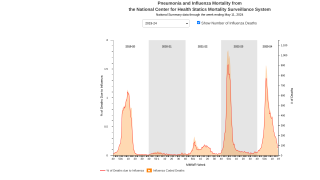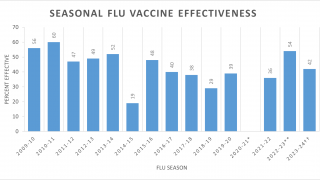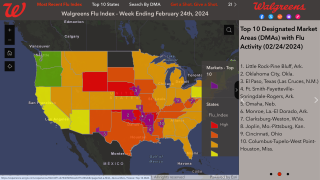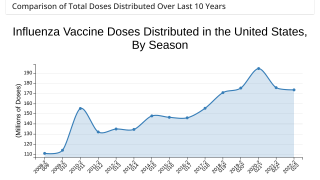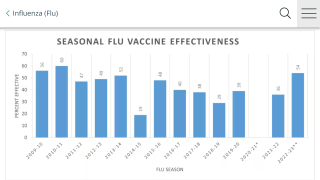Real-World Data Show Cell-Based and Adjuvanted Flu Shots Can Reduce Influenza Burden
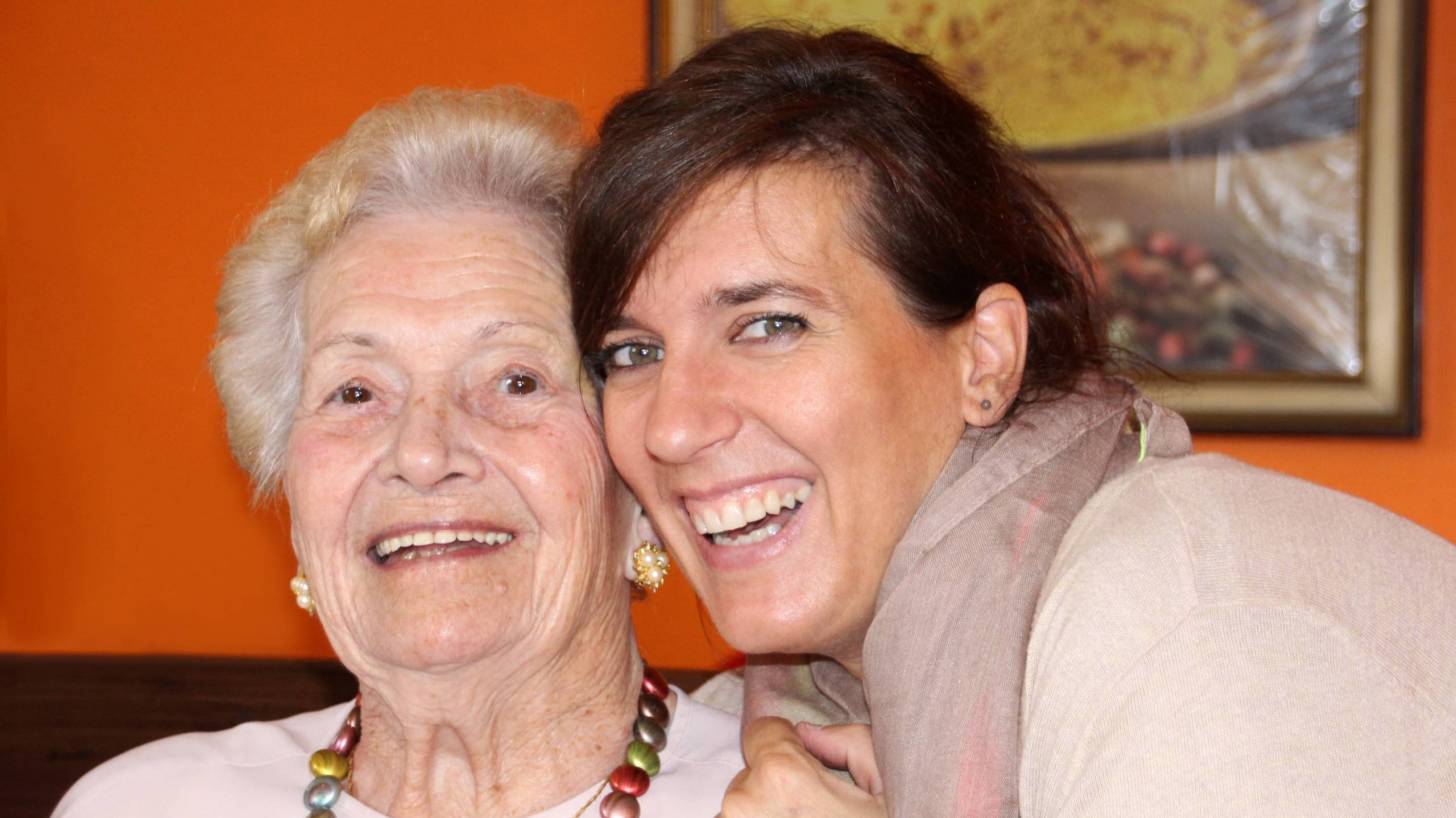
New data announced today from four real-world studies shows the impact that cell-based and adjuvanted influenza vaccines can have in reducing the burden of seasonal influenza on hospitals and health systems.
The data from CSL Seqirus were presented at OPTIONS for the Control of Influenza (OPTIONS XI), being held in the United Kingdom.
The Company confirmed on September 26, 2022, an observational study using real-world evidence (RWE) showed that adults 65 years of age and older had fewer influenza-related hospitalizations during the 2019/20 U.S. influenza season when vaccinated with FLUAD® (Influenza Vaccine, Adjuvanted), an MF59®-adjuvanted trivalent vaccine (aTIV), compared to quadrivalent inactivated influenza vaccine (QIVe) or a high-dose trivalent vaccine (HD-TIV).
A second study showed FLUCELVAX® QUADRIVALENT (Influenza Vaccine), a cell-based quadrivalent influenza vaccine (QIVc), to be more effective than standard-dose egg-based vaccine (QIVe) in preventing cardio-respiratory hospitalizations, including influenza-related hospitalizations in adults 18 to 64 years of age during the 2019/20 U.S. influenza season.
"These data show the benefits of adjuvanted and cell-based influenza vaccine technology advances, like aTIV and QIVc, in reducing influenza-related outcomes compared to high-dose or standard vaccines in the real-world setting," commented Dr. Gregg Sylvester, Chief Health Officer, CSL Seqirus, in a related press release.
"Additional studies presented at OPTIONS XI show the significant burden that influenza places on healthcare resource use."
"And we, at CSL Seqirus, are committed to pursuing innovative vaccine technology platforms that aim to prevent severe disease and ultimately help to free up these critical medical resources."
A predictive dynamic modeling study showed vaccination with QIVc and FLUAD® QUADRIVALENT compared with QIVe could help avoid hospital bed saturation by preventing the use of 24,000 acute hospital beds and 3,600 intensive care unit (ICU) beds in a high incidence flu season in the U.S.
In an influenza-COVID-19 co-circulation scenario, the immunization rate with QIVc/aQIV would need at least 60% to prevent ICU bed saturation.
Unfortunately, the influenza vaccination rate in the U.S. during the 2021/22 season was 45%.
An additional predictive modeling study conducted in Spain also showed that replacing QIVe with aQIV in adults 65 years and older could be highly cost-effective from a payer and societal perspective, preventing tens of thousands of complicated influenza cases, including hospitalization or death.
Joaquin Mould-Quevedo, Ph.D., Global HEOR & Value Strategy Director, CSL Seqirus, added, "As we enter the 2022/23 influenza season in the Northern Hemisphere, we remain committed to working with our partners in public health to do everything we can to increase influenza vaccination rates and protect our communities from influenza."
About these studies:
- Real-World Effectiveness of MF59-Adjuvanted Influenza Vaccine in Preventing Hospitalizations in Adults ≥65 Years During the 2019-2020 U.S. Influenza Season (Poster Exhibition: Tuesday, September 27, 2022, #P-328). Results showed that, among 4.3 million adults vaccinated for influenza, immunization with aTIV was more effective than QIVe and HD-TIV in preventing cardio-respiratory-, respiratory- and influenza-related hospitalizations. In addition, the rVE was consistently higher with aTIV versus QIVe than aTIV versus HD-TIV. The researchers concluded that aTIV offers improved protection against severe influenza disease in older adults, as shown by these real-world results from the 2019/20 U.S. influenza season.
- Real-World Effectiveness of Cell-Based Quadrivalent Influenza Vaccine in Preventing Hospitalizations in Adults 18-64 Years of Age During the 2019-2020 U.S. Influenza Season (Poster Exhibition, Tuesday, September 27, 2022, #P-329). Results showed that among 5.9 million adults who received the vaccines, immunization with QIVc was more effective than QIVe in preventing cardio-respiratory-, respiratory- and influenza-related hospitalizations. No difference was observed between the two types of vaccines in hospitalizations related to pneumonia, myocardial infarction, or ischemic stroke. The researchers concluded that QIVc offers improved protection against severe influenza disease in adults ages 18 to 64, as shown by these real-world results from the 2019/20 U.S. influenza season.
- Cost-Effectiveness of Quadrivalent Adjuvanted Influenza Vaccine with MF59® Versus a Standard-Dose Quadrivalent Influenza Vaccines in Spain (Poster Presentation: Monday, September 26, 2022, #P-186). From the payer perspective, results showed that, with relative vaccine effectiveness (rVE) of 34.7 percent (data considering a meta-analysis including lab-confirmed endpoints only), replacing QIVe with aQIV in an older adult population in Spain would prevent 38,982 complicated influenza cases, 988 hospitalizations, and 495 deaths, and the incremental cost per quality-adjusted life years (QALY) gained was €2,726.55. With an rVE of 13.9 percent (data from a recently published meta-analysis including multiple endpoints), replacing QIVe with aQIV would prevent 16,824 complicated influenza cases, 433 hospitalizations, and 219 deaths, and the incremental cost per QALY was €7,840.89 and €5,081.88 from the payer and societal perspective, respectively. The researchers concluded that aQIV is highly cost-effective compared to QIVe from both a payer and societal perspective and should be the preferred influenza vaccine option for adults 65 years and older in Spain.
- The Impact of Influenza Vaccine Effectiveness on U.S. Hospital System Resources Within an Influenza and COVID-19 Co-Circulation Scenario. (Poster Presentation: Tuesday, September 27, 2022 #P-268). Results showed that, compared to QIVe, vaccination with QIVc or aQIV would prevent utilization of 24,010 acute hospital beds and 3,601 ICU hospital beds within a high incidence flu season, and 17,329 acute hospital beds and 2,659 ICU hospital beds within a low incidence flu season. The researchers concluded that this reduction of inpatient services would not be enough to avoid saturation of ICU hospital resources due to COVID-19 hospital bed demand. As a result, they called for increasing the influenza vaccination rate to 60 percent or higher and using QIVc and aQIV for those ages six months through 64 years old and those 65 years and older, respectively, to avoid ICU bed saturation in the U.S. when both influenza and COVID-19 are circulating.
Study Limitations: RWE complements randomized controlled trial research, continually assessing influenza vaccine innovation effectiveness and providing an ever-growing data set on real-world outcomes. The above studies featuring RWE were subject to the typical limitations of retrospective cohort analyses. In addition, observational studies have limitations, including the potential for selection bias and residual confounding. Individual study limitations may include retrospective analyses, a potential lack of laboratory-confirmed influenza, and varying data sources.
CSL Seqirus is a business of CSL Limited, one of the largest influenza vaccine providers in the world.
Additional flu shot news is posted at PrecisionVaccinations.com/Flu.
PrecisionVaccinations publishes fact-checked, research-based vaccine news manually translated and curated for mobile readership. This news article is not paid content.
Our Trust Standards: Medical Advisory Committee














